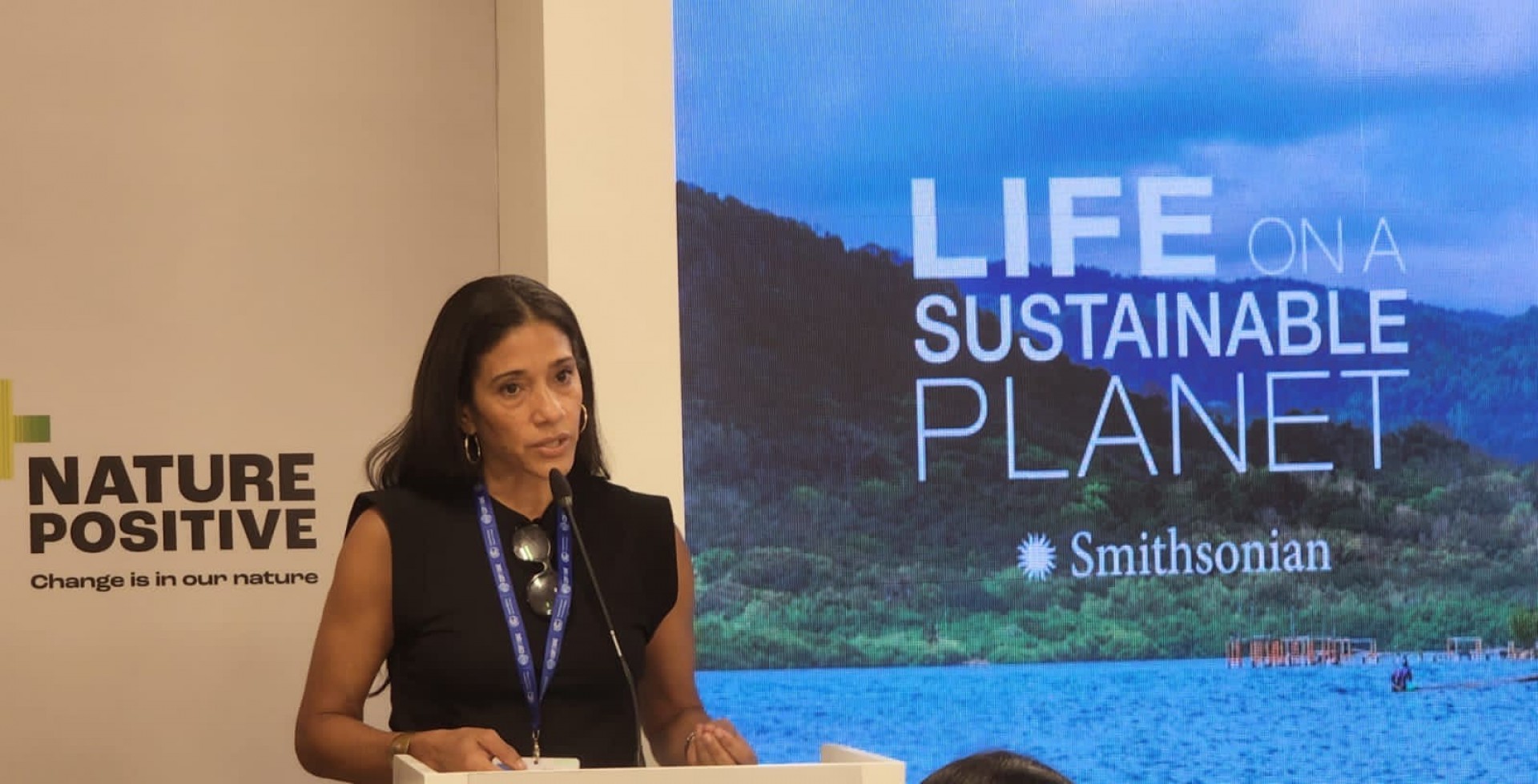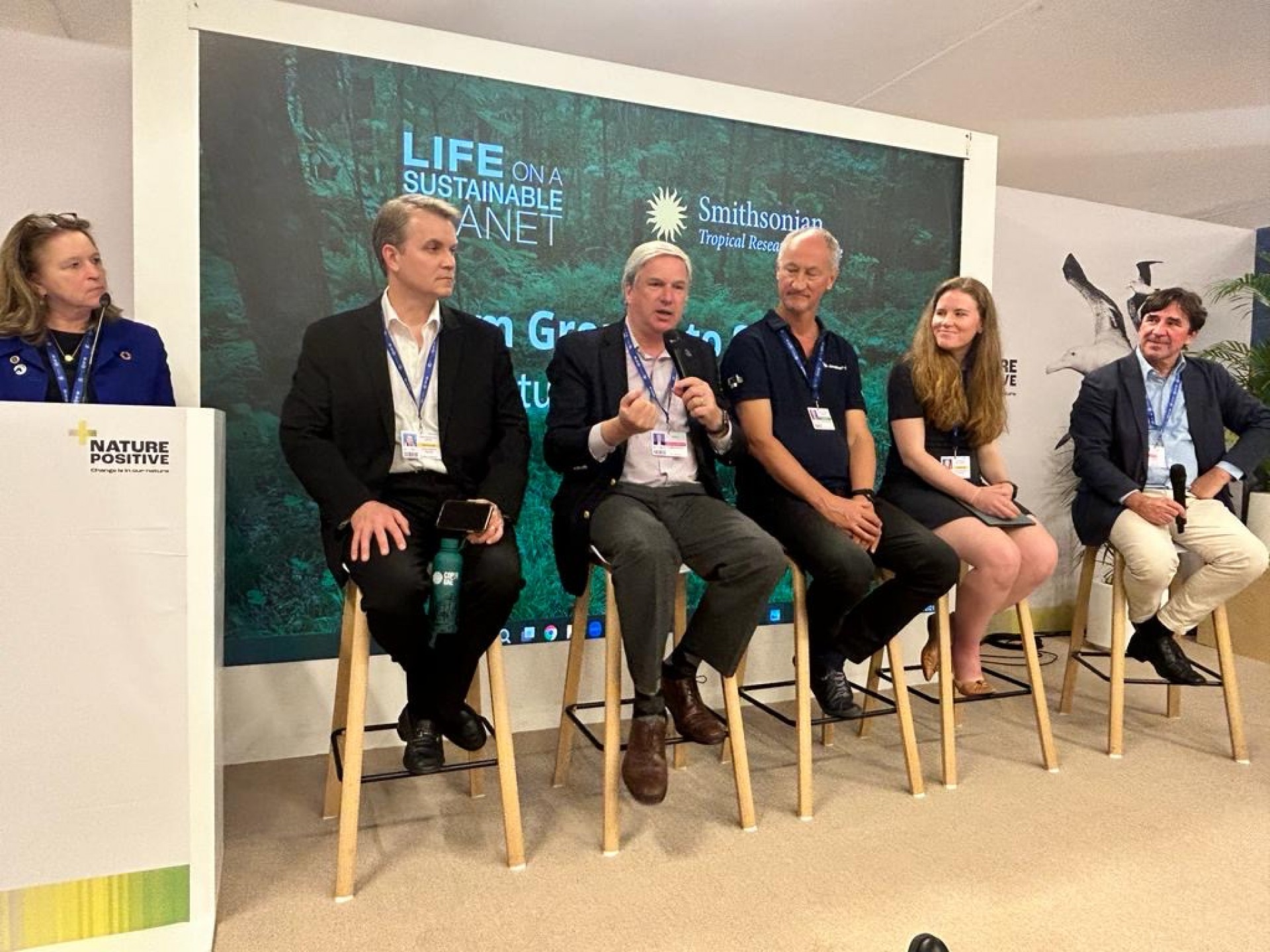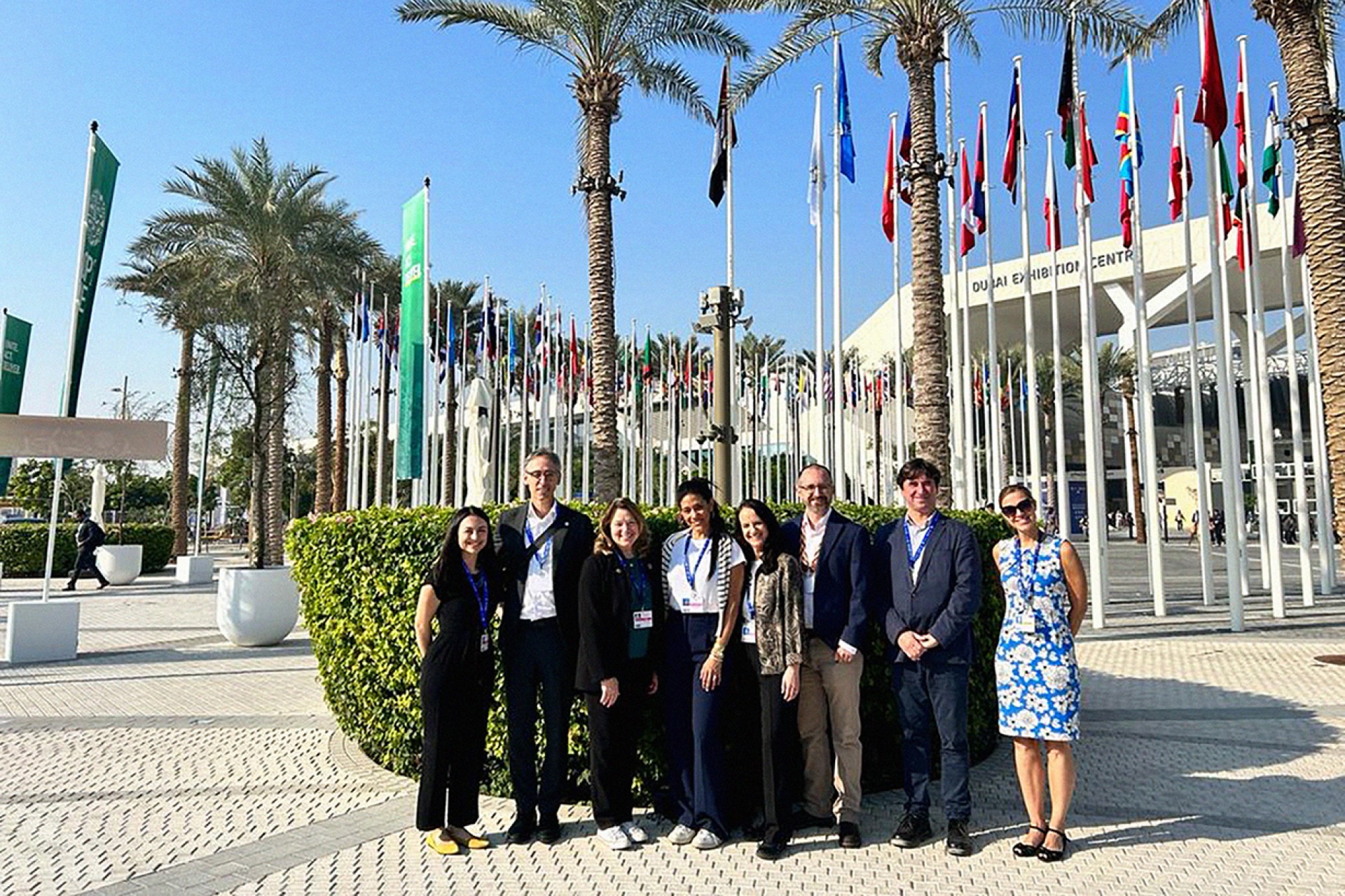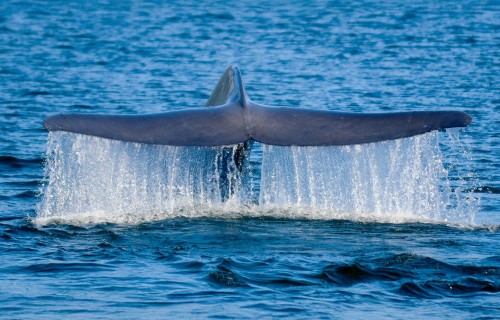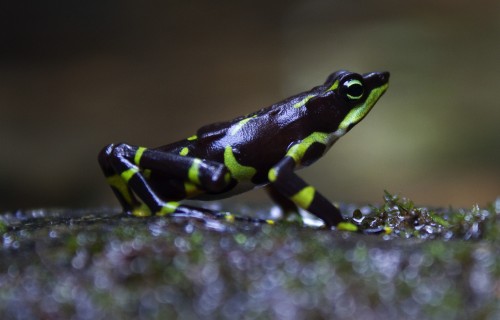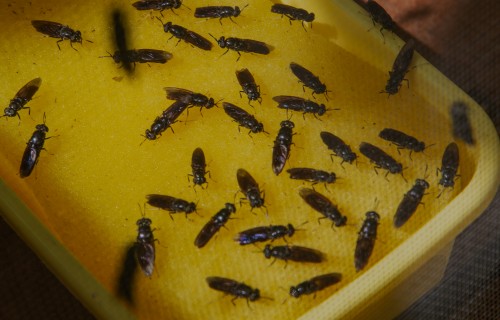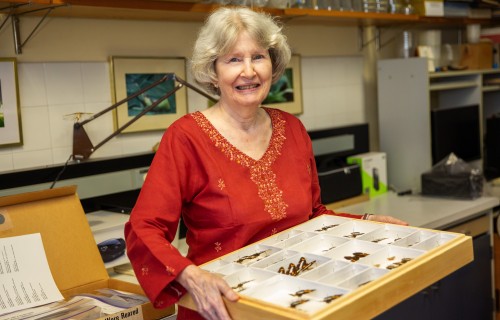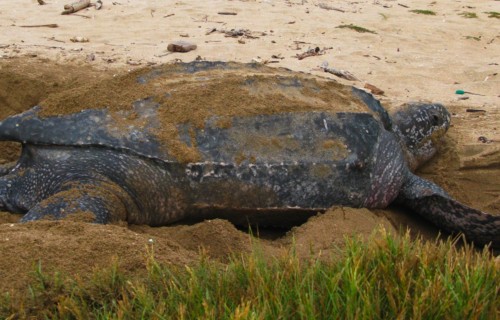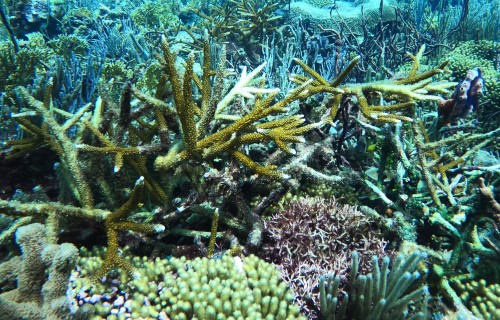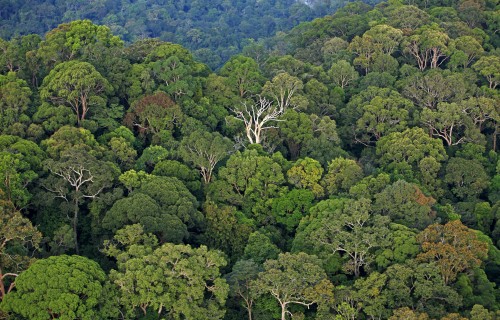Above the tropical forest canopy,
sensors capture the fluxes of gases
between the trees and the atmosphere
Tropical
science in Dubai
STRI at COP 28: A call for nature-based climate solutions and global collaboration
by Leila Nilipour
Experts from the Smithsonian Tropical Research Institute emphasized nature-based solutions, discussed ocean resilience, and launched the GEO-TREES initiative for global forest carbon monitoring.
As the planet experiences its hottest year in human history, the 28th annual United Nations climate meeting (COP 28) wrapped up in Dubai, UAE, with an agreement to slowly transition away from fossil fuels. Researchers and activists from tropical countries showed up to remind world leaders about the importance of focusing on the parts of the world with the greatest potential for nature-based climate solutions -the same parts of the world that stand most vulnerable to climate change.
Scientists from the Smithsonian Tropical Research Institute at COP 28 included Joshua Tewksbury, STRI director; Ana Spalding, the Adrienne Arsht Community-Based Resilience Solutions Initiative Director; and Stuart Davies, Director of Forest-GEO, a global network of scientists and forest research sites. A broader Smithsonian delegation, including Ellen Stofan, the Smithsonian Under Secretary for Science and Research, and representatives from the Smithsonian Science Education Center, the Smithsonian Conservation Biology Institute, the Smithsonian Environmental Research Center, and the Office of International Relations, were also present in Dubai.
Spalding moderated the panel “Empowering people and nature: supporting resilient solutions for our ocean,” co-hosted by the Smithsonian in the Nature Positive Pavilion, a conversation between experts, policymakers, and community representatives from the global tropics about advancing inclusive, equitable ocean-climate solutions that are rooted in local knowledge.
Ana Spalding, the Adrienne Arsht Community-Based Resilience Solutions Initiative Director moderated the panel “Empowering people and nature: supporting resilient solutions for our ocean” in the Nature Positive Pavilion and participated in the panel “Relocation of the Guna People in Panama” in the Panama Pavilion.
Credit: Smithsonian Institution
She also participated in a panel in the Panama Pavilion called “Relocation of the Guna People in Panama,” where she spoke about the relocation of the Gardi Sugdup Island community to the mainland as a strategy for climate change adaptation, while noting some of the best practices for planning these types of strategies, based on experiences from other parts of the world.
Meanwhile, Davies participated as a panelist in the official launch of the GEO-TREES initiative “From Ground to Space: The Future of Forest Carbon,” which was moderated by Ellen Stofan, the Smithsonian Under Secretary for Science and Research, and counted on Cristián Samper, Managing Director and Leader of Nature Solutions at the Bezos Earth Fund, as well as representatives of the World Resources Institute, the European Space Agency, and the University of Birmingham.
“For over 175 years the Smithsonian has been doing science for scientists,” said Stofan. “Now we need science for impact, for solutions.”
One of these solutions -GEO-TREES- focuses on addressing the current uncertainties in satellite estimates of forest carbon by creating a ground-based forest carbon reference system supported by a network of scientists and forest research plots worldwide to calibrate and validate space data. Validating this information is crucial to scientists, carbon markets, policymakers, and landowners, given the importance of forests in mitigating climate change.
The official launch of the GEO-TREES initiative took place at COP 28 during the panel “From Ground to Space: The Future of Forest Carbon,” moderated by Ellen Stofan, and with participation of ForestGEO director Stuart Davies and representatives of Bezos Earth Fund, the World Resources Institute, the European Space Agency, and the University of Birmingham.
Credit: Smithsonian Institution
“Forests account for three quarters of total carbon stored on the terrestrial surface of Earth and taking up one quarter of anthropogenic global carbon emissions,” said Davies. “But they’re a huge risk because they suffer damage through storms, fires and other disturbance mechanisms that are increasing their rates globally. This risk could be somewhat reduced if we can map, monitor, and measure carbon and biomass at a global scale much more rapidly, precisely.”
That is how the GEO-TREES partnership formed between the earth observation and the ground ecological community.
“What we can achieve together is much bigger than what any of us can achieve alone. That’s why we are in GEO-TREES,” said Frank Martin Seifert, from the European Space Agency. “Forests alone will not save our planet, but without forests our planet cannot be saved.”
Aside from STRI scientists, the Smithsonian delegation at COP 28 included Ellen Stofan, the Smithsonian Under Secretary for Science and Research, and representatives from the Smithsonian Science Education Center, the Smithsonian Conservation Biology Institute, the Smithsonian Environmental Research Center and the Office of International Relations.
Credit: Smithsonian Institution
Spalding was present in a few additional panels, including “Educating for Sustainable Development: Co-Designing the Future of Climate Education” and “The Science-policy interface: How can researchers shape critical climate policies?” She was also invited to the CAF Pavilion, where she spoke about how Smithsonian science conducted in the Mesoamerican Biological Corridor may help inform management decisions in the region.
“This was the first time we had our own panels at COP 28,” said STRI director, Joshua Tewksbury. “The longer-term plan is to build our own science pavilion, where we can coordinate the research community around climate action there.”

